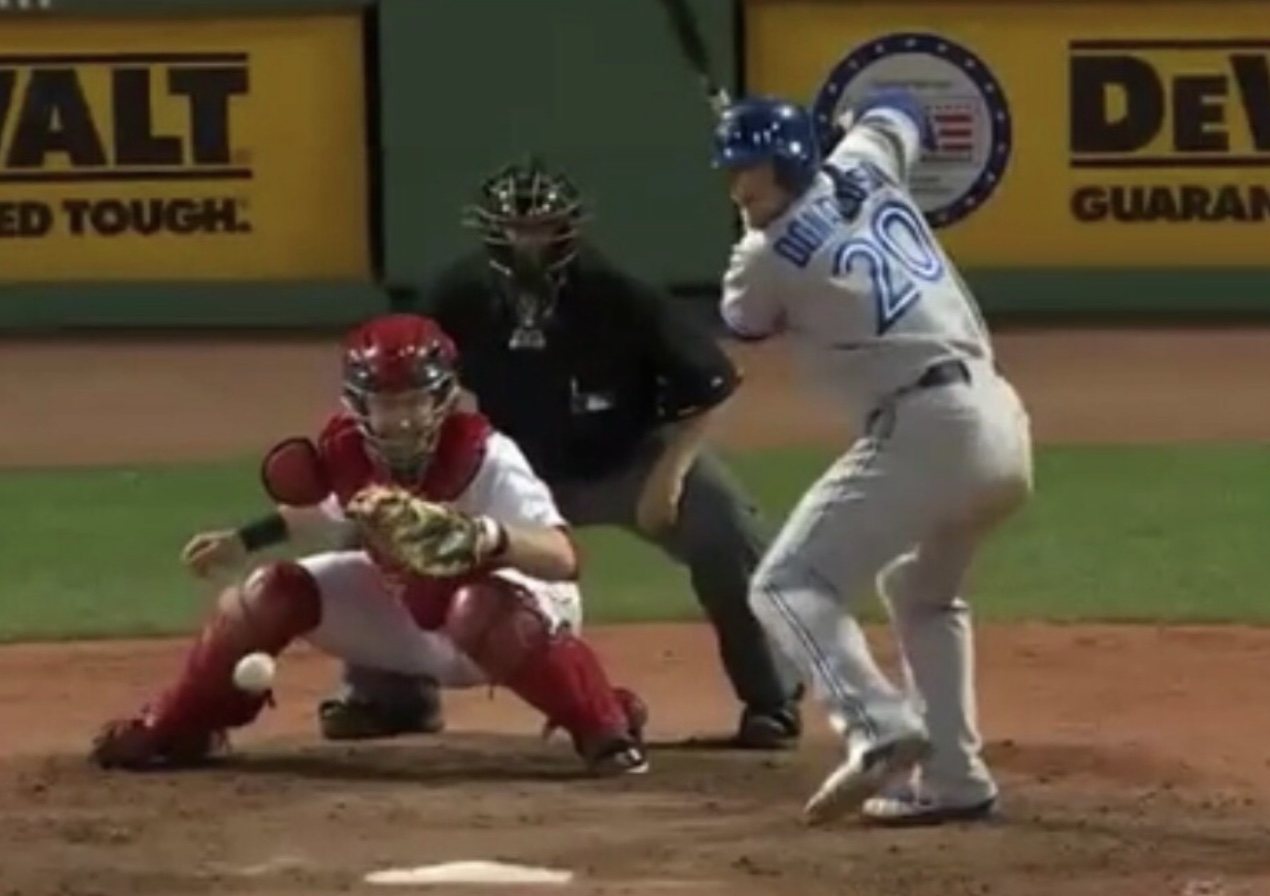
WE ARE MORE EFFICIENT MOVING WITH ROTATION THAN WITHOUT IT!
I approach these articles, which contain some “scientific” content, from a coach’s perspective with over 30 years IN THE BATTING CAGES & ON THE FIELD asking:
- how can this information help my hitters BE THE BEST?;
- how can I tweak the sequencing of a movement in a drill to better comply with “science”?;
- how can I come up with a simple modification of my hitter’s favorite gadget or maybe introduce a totally new gadget into the hitter’s protocol to help them FEEL THE MOVEMENT OF CREATING & DELIVERING ELASTICITY?;
- how can I help the hitters FEEL THE MOVEMENT OF CREATING & DELIVERING ELASTICITY with a simple but accurate constraint?;
- what’s the best motor learning methods —cleaning up our hitters movements WITHOUT EVER DISCUSSING MECHANICS OR GETTING INTO ANY OF THIS TECHNICAL “STUFF” WITH THE HITTER?
EVERYTHING I talk about in these articles, i.e. THE MOVEMENTS, were all taught to my players/hitters with simple drills and homemade gadgets that were based on:
- my own “self-taught” understanding of the relevant anatomy,
- the degrees of freedom challenges I watched all different types of athletes struggle with in the batting cages, and
- figuring out the basic SWING ATTRACTORS.
THE HITTER DOES NOT HAVE TO LEARN THE ANATOMY OF THE BODY TO MAKE THESE MOVEMENTS. (In fact, coming soon will be my notes & observations from a clinic I did last month; ZERO discussion of anatomy or science; just simple drills and cleaner movements).
As the coach:
- Just put them in the right learning environment;
- with the right drills and gadgets and protocols;
- with some instruction, oversight and supervision; and
- objective data/measurements and feedback; and
- slow motion video review and analysis;
- to make sure the MOVEMENTS are “checking the boxes of the swing attractors”; then
- trust the hitter’s body to self-organize to figure out the rest.
I’m hopeful that by presenting this information, you will be able to create the right movement parameters with 2/3 simple constraints, and come up with 2/3 drills or gadgets and then your hitters too will achieve some “magical moments “.
Last week we discussed “CULTIVATING ELASTICITY” and that the secret to “little guy’s power” is knowing HOW TO cultivate elasticity by applying force from both sides of the spine to create stretch & elasticity and then finish with “true” rotational forces.
THIS WEEK WE ARE DISCUSSING WHAT YOU AS A COACH SHOULD BE LOOKING FOR DURING THE HITTER’S MOVEMENTS TO CULTIVATE & DELIVER ELASTICITY.
MY “OUT-OF-THE-BOX” THEORY
Instead of talking about a differential between the hips and shoulders moving in opposite, transverse directions, I am suggesting movements of an integrated pelvis & spine; and my interpretation of this for hitting purposes is the use of the lumbo-pelvic spine complex and the posterior and anterior oblique muscle slings that work contralaterally and from PROXIMAL TO DISTAL to accomplish the cultivation of the elasticity needed to execute the launch of a baseball/softball swing in .14/seconds.

- I BELIEVE that the lumbo-pelvic-spine complex (an integrated spine and pelvis) is the SOURCE of the movements made by most all great hitters;
- I BELIEVE that the transmission of force through the pelvis/spine creates and LEADS TO axial rotation of the “torso” via the thoracic spine; I do not believe that using the terms “torso” -“shoulders” as two of the links in the kinematic sequence is the best we can come up with and it’s very misleading, especially to the HITTER. Remember, if you as a coach think the torso and shoulders are important and how they interact with each other is relevant, and that is the focus of your drills and movement protocols, and what you measure with objective data, then your hitters will self-organize around torso/shoulders and always have problems.
- I BELIEVE that the transmission of force through the lumbo-pelvic-spine complex is the MOST IMPORTANT PART OF QUALITY ROTATIONAL POWER DEVELOPMENT.
- I BELIEVE that we have all been “hoodwinked” into believing that hip-shoulder differential, hip-shoulder separation and hip-shoulder motion are the seminal movements in baseball hitting;
- I BELIEVE that any “change of direction” or “rubberband effect” requires a stall &/or pause, and thus is flawed; more specifically, any movement to “deliver the elasticity” that exceeds .14/seconds is flawed.
- I AM postulating that hip-shoulder differential and focus actually derails energy transmission away from the power of the lumbopelvic-hip complex and oblique slings and results in a delivery of elasticity slower than .14/seconds.
THE STATUS QUO EXPLANATION OF KINEMATIC SEQUENCE
BELOW is a typical excerpt of how kinematic sequence is explained and tested and promoted.
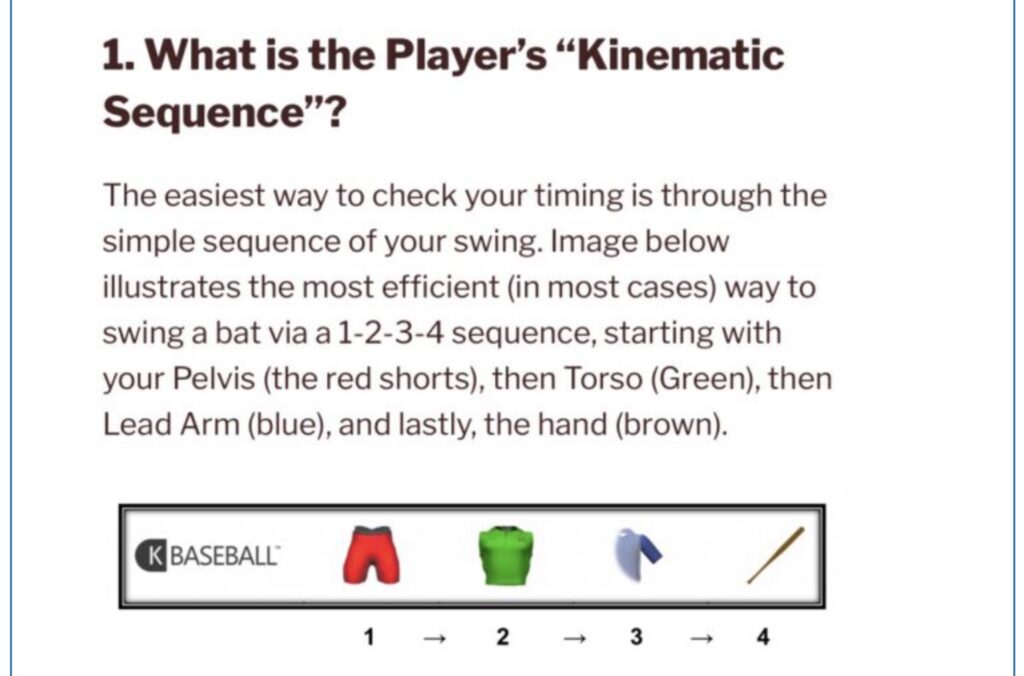
MISTAKES OF USING KINEMATIC MEASUREMENTS FROM GOLF WITH BASEBALL/SOFTBALL HITTING
MISTAKE #1: Most think about CREATING ELASTICITY in absolute terms of HOW MUCH- by creating as much differential between the hips and shoulders; “MORE IS NOT BETTER”; as a MLB hitting coach told me: “what you get into- -you have to get out of”;
MISTAKE #2: By ONLY considering the transverse plane of motion skews the analysis; the frontal and sagittal planes are HUGE, MAJOR considerations; moreover, how the planes interact, intersect, overlap, interplay with each other is CRITICAL IN ANY ANALYSIS of movement patterns of hitters;
MISTAKE #3: Lumping the spine, obliques, latissimus, etc. together as “TORSO”, then only measuring “torso” is by far the biggest mistake. When only using hips and torso/shoulders as the landmarks there will always be FALSE READS. Hopefully with 3-D in-game motion capture (KinaTrax markerless technology), analyst are able to make better distinctions with more precise landmarks/language and really appreciate the beauty and amazing artistry of the interplay of the body’s functional movement patterns. The teams that are able to figure out how to accurately measure “the swing attractors” will have a huge advantage, especially in player development.
MISTAKE #4: Thinking about ELASTICITY/stretch without consideration as to WHEN the stretch is created, and without understanding that the best in baseball start out by creating “some” stretch but dynamically continue to MAINTAIN & INCREASE it as late into their pattern as possible and as long as necessary relative to where the incoming pitch is.
MISTAKE #5: Not being able to differentiate between the QUALITY OF ELASTICITY & THE QUALITY OF ROTATION. SEE SIDE BY SIDE PHOTO BELOW.
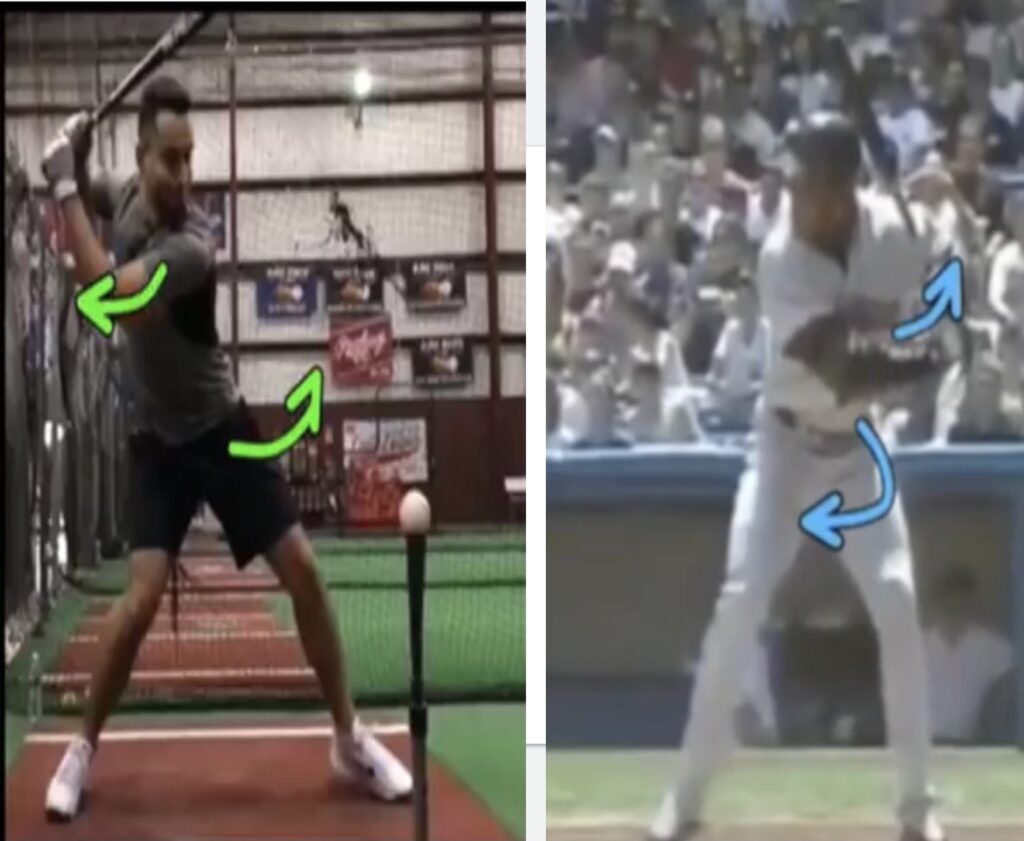
To be honest, these two movement patterns ARE NO WAY CLOSE TO BEING SIMILAR even though a kinematic sequence analysis of hips-torso-shoulders would indicate otherwise. Using hip-shoulder separation cues and drills have NOT worked and have left too many good hitters confused and far short of their potential. By NOT having a more precise and interactive “descriptive” way to communicate and distinguish between the QUALITY OF ELASTICITY & THE QUALITY OF ROTATION is a big problem right now.
CULTIVATING “MORE” ELASTICITY
The dynamic increase in the STRETCH (what SWING ATTRACTORS refer to as CULTIVATING ELASTICITY) from load to toe touch is a GOOD THING and correspondingly increases the power production that can have a direct effect on 14/100th of a second bat speed closing time and exit velocity of the baseball/softball.
This idea of measuring the differential between the pelvis and shoulders and figuring out whether there is an increase in the stretch is a copycat from golf, and measured with copycat golf devices and in the golf world called X FACTOR.
However, in baseball/softball, it is NOT AS SIMPLE AS A HIP-SHOULDER DIFFERENTIAL MEASUREMENT. And it should NOT be a foregone conclusion that the kinematic sequence is concisely labeled right by using the less than descriptive terms of hips, then torso, then shoulders then hands.
The pelvis and spine work in three dimensional motions. The phase relationship between the pelvis and the spine (sternum) is the more relevant consideration to focus on in the baseball hitter rather than hip-shoulder separation. Let’s see what analyst and hitting personnel will be able to come up with after getting in-game data that will be readily available with 3-D motion analysis technology —a sensor-free, markerless motion capture system for biomechanics that has been installed in MLB stadiums.
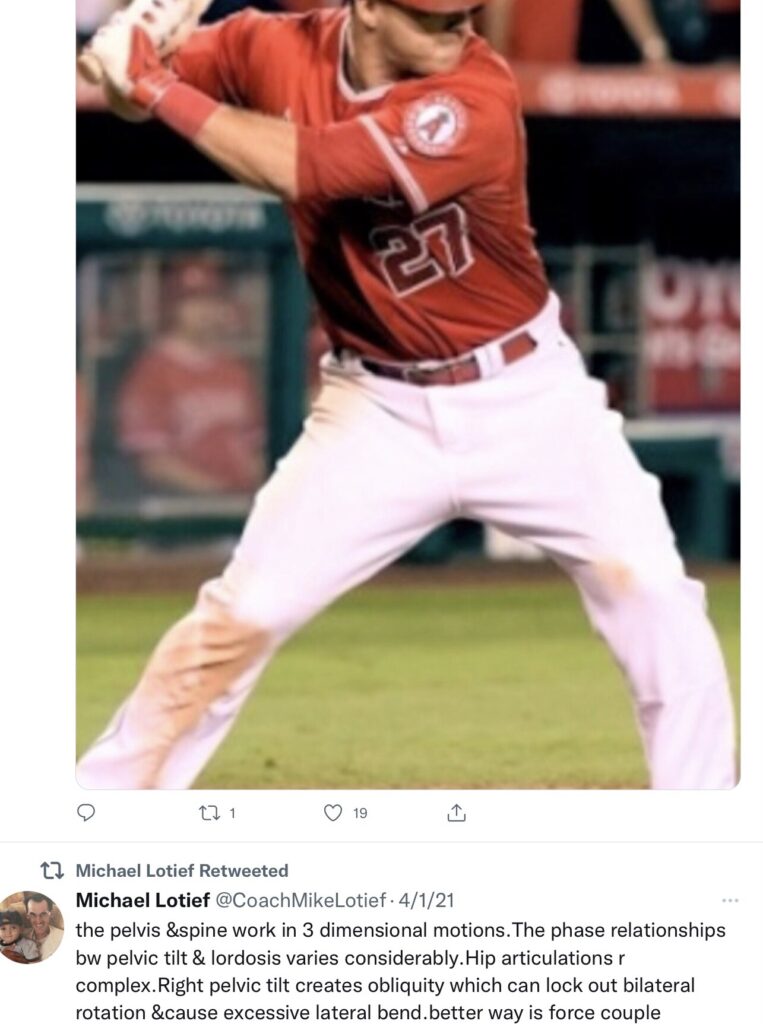
BARRY BONDS ILLUSTRATED
Hitters need to learn how to create & cultivate THE BEST ELASTICITY possible; and just as importantly, WHEN to create it: in other words, being able to maintain and increase the stretch AS LONG AS NECESSARY from the start of hinge until it’s released AS LATE AS POSSIBLE, and then deliver that elasticity in .14/100ths of a second when the incoming pitch is within 12 feet from home plate.
When watching a hitter like Barry Bonds, his stretch does not go to the maximum as soon as the pitcher breaks his hands — he CULTIVATES ELASTICITY by maintaining and increasing it the entire time. SEE BELOW.
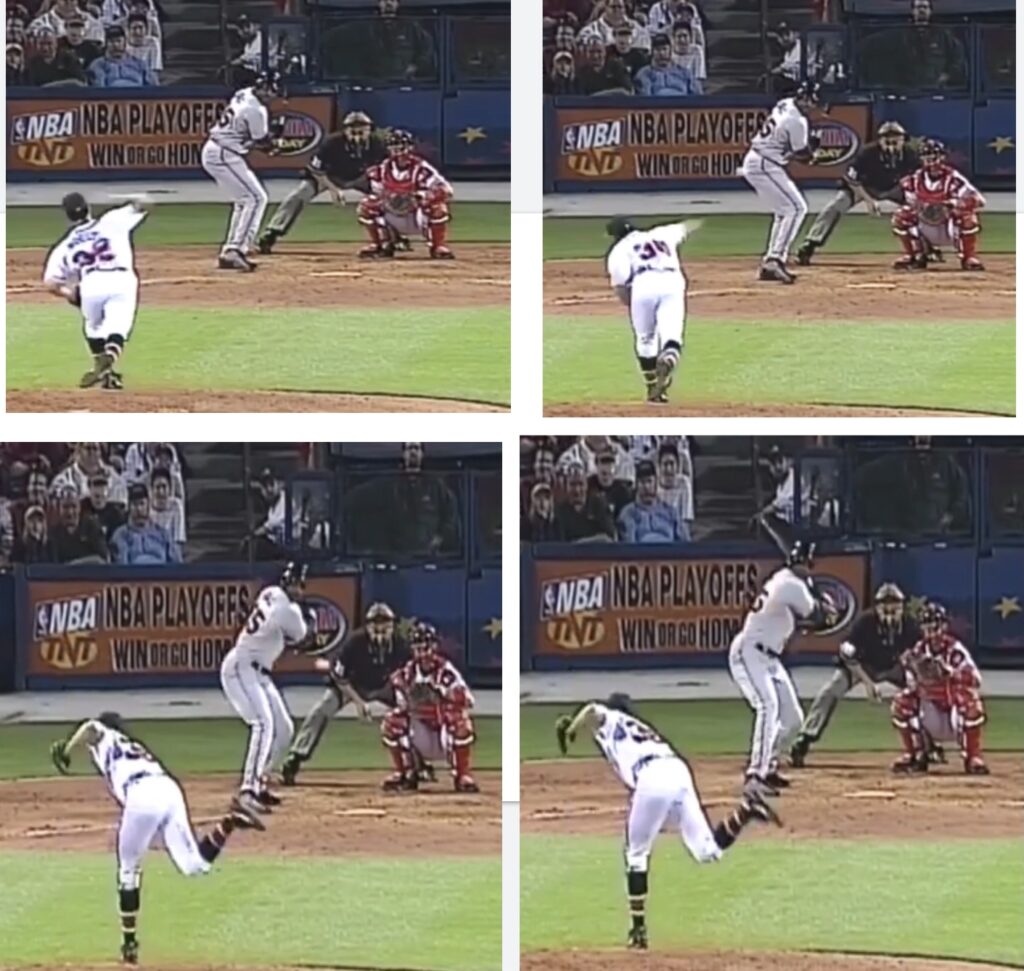
1. In the first photo on the top left, he is hinging his pelvis with an integrated spine via his lumbopelvic-hip complex in the sagittal plane first which starts to create and cultivate elasticity. But then he creates MORE ELASTICITY.
2. In the photo on the top right, Bonds starts to coil as the pitcher releases the pitch and “MOVES HIS MIDDLE” WHILE GOING FORWARD AND INCREASING HIS STRETCH in the other planes of motion. Bonds creates MORE degrees of stretch here as he moves his center of mass forward yet keeps his spine stable after the ball has been released.
He does this by using ALL THE DIFFERENT PLANES OF MOTION. That’s where the idea/analogy of pulling a rubberband loses its effectiveness with me – just keep pulling each end in the same opposite directions and in the same plane of motion and at the same rate until it snaps back. The “snap back” is a CHANGE OF DIRECTION and with the change of direction comes a “stall” or “pause”. That’s NOT what Bonds is doing; that’s NOT the purpose of cultivating elasticity.
3. In the bottom two frames, “it is easy for my eyes to see” the influence of the lumbopelvic-hip complex as his SOURCE of the movements that LEADS TO axial rotation of the thoracic spine. The transmission of force through his pelvis & spine is the MOST IMPORTANT PART OF Bonds being able to create QUALITY ROTATIONAL POWER.
Bond’s stretch is DYNAMIC. THERE IS NO PAUSE. THERE IS NO STALL.
Good power hitters do not stop the stretching process early. There is no “rubberband effect” of pulling back then waiting for it to snap back. There is no such thing as “get your foot down early”.
ANYTHING that stops or pauses the dynamic process of cultivating and delivering elasticity is flawed.
CLOSING THOUGHTS
When thinking about ELASTICITY/stretch consider:
(1) it’s the lumbar spine, pelvis and oblique slings, rather than the hips, torso & shoulders;
(2) how “each” move in the 3 different planes of motion, and
(3) when and how long does each occur. Also consider within each of these categories:
- WHEN the stretch is created in relationship to the pitch;
- HOW LONG it can be created;
- what PLANES OF MOTION and in what sequence;
- creating “some” stretch but dynamically continue to INCREASE IT AS LONG AS NECESSARY AND AS LATE AS POSSIBLE relative to where the incoming pitch is;
- The WORST THING a hitter can do is “stall” or “pause” from cultivating elasticity.
Create “some” stretch early, then dynamically continue to increase it as long as necessary and as late as possible, then the body and its slings are in charge to finish the swing, decentralized from the CNS, especially IF QUALITY ELASTICITY HAS BEEN CULTIVATED & INCREASED.
The hitter has put the body into a bind with the incoming pitch just 12 feet away – the subconscious has predicted, anticipated, and made its best guess of the speed (arrival time) and location (final destination) of the pitch -and the body has the ability to adjust and adapt to an immense number of scenarios and situations.
The muscle slings and synergies, as set up by the lumbo-pelvic-hip complex, will now coordinate and finish with explosive power without deliberative thought process, as the body is on “auto pilot” to finish the swing as a result of the elasticity previously cultivated.
PURSUE EXCELLENCE & WIN THIS PITCH!
About the Author

Mike Lotief coached 17 successful years as either the head softball coach or co-head softball coach with his wife Stefni Whitton Lotief at the University of Louisiana from 2002-2017 with an overall coaching record of 731-176 (80.6 winning percentage). Every season, the Ragin Cajuns softball team advanced to the NCAA tournament and also advanced to three (3) Women’s College World Series (2003, 2008, 2014) and from 2012-2016 advanced to five (5) straight NCAA Super Regionals. Coach Lotief produced over 40 All American selections and his 2017 team lead the nation in scoring and was ranked in the Top 10 in home runs, slugging percentage, on base percentage.
The coach is a cancer survivor (twice) and was the first person in the U.S. to receive the Pro Trach device. Mike and Stefni spearheaded and raised the funding to build the new softball stadium in 2009 and the new softball indoor hitting facility in 2015. They are proud parents to Chelsea, who played softball and graduated from the Univ. of Louisiana in 2018, and Andrew, who is a junior at Louisiana studying Mechanical Engineering.
Previous Articles in this Series
- The Mental Swing Attractors: Failure Cannot Break You (Nov. 11, 2021)
- Training Insights: “Swing Attractors” by Coach Mike Lotief… the Flaws of Pelvic Loading (Nov. 9, 2021)
- The Mental Swing Attractors: Push Yourself… You Don’t Have to Be #1 to BE #1! (Nov. 4, 2021)
- Training Insights: “Swing Attractors” by Coach Mike Lotief… Pelvis Loading, Part 2—The Planes of Movement (Nov. 2, 2021)
- The Mental Swing Attractors: Remove the Rope from Your Ankle & Get Rid of the Limiting Beliefs! (Oct. 28, 2021)
- Training Insights: “Swing Attractors” by Coach Mike Lotief… Pelvis Loading, Part 1—It’s All in the Hips (or Somewhere Deep Below) Oct. 26, 2021
- The Mental Swing Attractors: Champions are Developed by Devotion & Discipline! (Oct. 21, 2021)
- Training Expertise: “Swing Attractors”… the Secrets of Power Hitting by Coach Mike Lotief (Oct. 19, 2021)
More About Mike Lotief
- Why Michael Lotief is a Legendary Coach? by Jay Patel
- The Secret To Michael Lotief’s Success. By Jay Patel
- Michael Lotief Fights for Rajin’ Cajuns by Graham Hays ESPN
- Michael Lotief: Taking His Sport to New Heights by Neha Kapoor
- For the Love of the Game: A Look at Ragin’ Cajun Softball’s Power Couple
- How Louisiana-Lafayette’s Michael Lotief Develops Hitting Gems by Graham Hays ESPN
